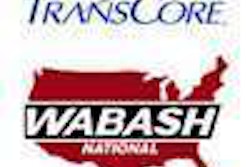Proponents of the two 2010-compliant heavy-duty engine technologies battled at press events during the Mid-America Trucking Show in Louisville, Ky., last week. The alternatives will reduce particulates and NOx emissions to meet the 2010 U.S. Environmental Protection Agency regulations.
Navistar, the lone engine maker not using selective catalytic reduction to meet the new regulations, lobbed shots at its competitors during a customer event where it debuted its 15-liter MaxxForce engine.
SCR involves complexity, payload, packaging, weight issues and hassles, Dee Kapur, president of International’s Truck Group, told attendees. “It means adding five new major emission-critical components,” Kapur said.
Navistar’s solution – enhanced exhaust gas recirculation – means no added hardware and no new, complex electrical system, Kapur said. For medium and severe-service, advanced EGR is “a no-brainer,” he said. Navistar’s 2010 engines will produce 0.5 grams of NOx and will use EPA credits previously earned by exceeding EPA emissions goals to achieve the required 0.2-gram limit.
“SCR is not a new development,” said Chris Patterson, outgoing president and chief executive officer of Daimler Trucks North America, during a panel discussion, in which SCR proponents sought to dispel what several participants deemed “misinformation” about the technology. Patterson cited the more than 200,000 SCR-equipped trucks Daimler has operating in Europe. The technology “has already saved our customers nearly half a billion dollars in fuel costs, compared to other technologies,” he said. Engine makers on the panel – Daimler, Mack, Volvo and Cummins – cited fuel savings of about 5 percent compared to 2007 technology engines.
All engine makers use EGR technology today, said Denny Slagle, president and CEO of Mack Trucks. “It generates a lot of heat and puts stress on the engine,” Slagle said. “We manage well today, but we’ve reached the limit of what we can do using EGR.”
One of Navistar’s biggest arguments against the use of SCR is that it makes the owner and driver accountable for emissions for the first time, Kapur said, because diesel exhaust fluid must be added periodically to maintain appropriate emissions levels. That initially was a concern for EPA as well, said Byron Bunker, with EPA’s Office of Transportation and Air Quality, during his panel presentation. “We acknowledged that [SCR] would bring the trucker into the program more than before,” Bunker said. “It was a concern. But the industry has done an absolutely fantastic job of answering that concern.”
Bunker said EPA has not endorsed any one means of meeting the 2010 standards.
DEF itself was a source of debate. Navistar officials said the fluid freezes at 12 degrees Fahrenheit and can become a toxic ammonia gas at 122 degrees. But Barry Lonsdale, president of Terra Environmental Technologies, a supplier of the urea used in DEF, told panel attendees that the fluid is nonhazardous based on criteria set by the Occupational Safety and Health Administration.
“Let’s remember diesel fuel is a hazardous substance,” Patterson added. “This is relatively benign.” And if DEF is altered by temperature or other factors, “it won’t affect engine performance or fuel economy and won’t harm the aftertreatment or engine,” he said.
Referring to media reports that DEF will be available at 500 U.S. fueling stations, Kapur expressed concern about adequate availability. Representatives from Pilot Travel Centers and TA/Petro who participated in the panel sought to allay any concerns. Both companies said they will begin rollout of DEF later this year. “Our plans include flexibility to meet demand when it ramps up,” said Tom O’Brien, president and CEO of TA/Petro.
Looking to the future, Kapur cited aftertreatment options under development that would eliminate the need for urea altogether. But panelists dismissed such technologies. “We don’t see it [happening] on anything close to a reasonable horizon,” said Jim Kelly, president of Cummins engine business.
“Even if it is technologically viable, it would add cost and waste,” Patterson added.
– Linda Longton and John Baxter












